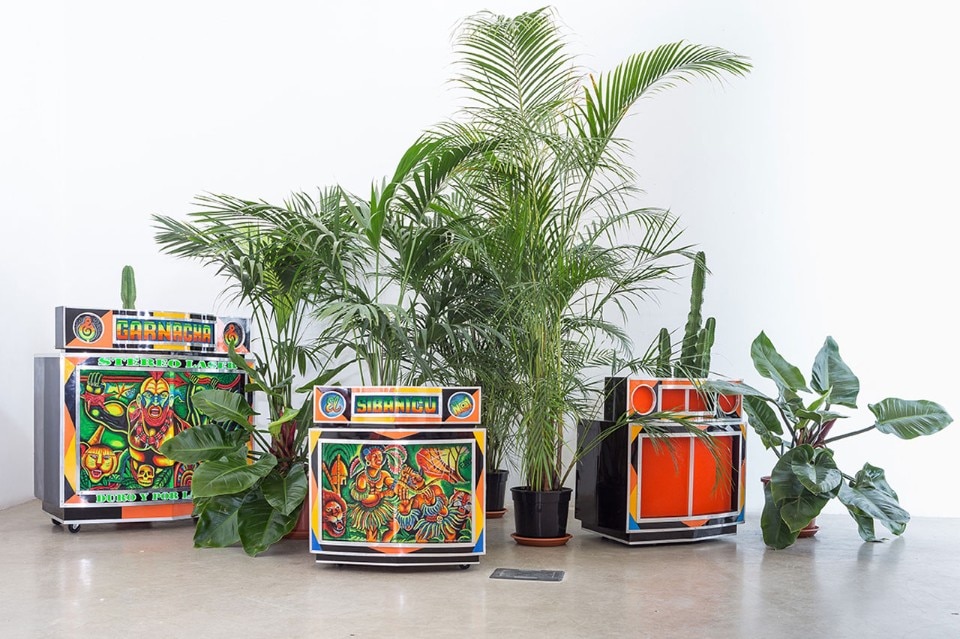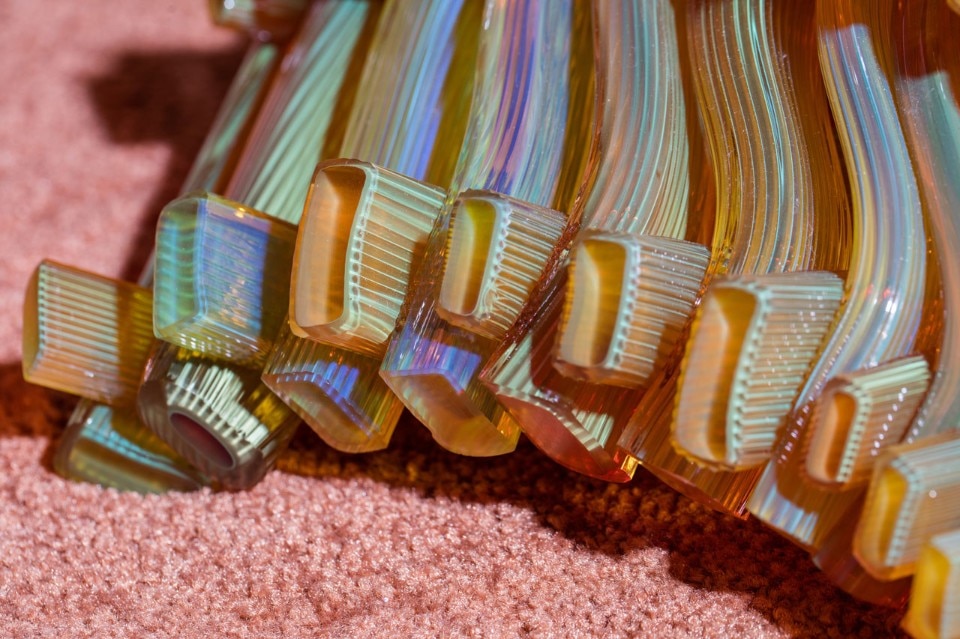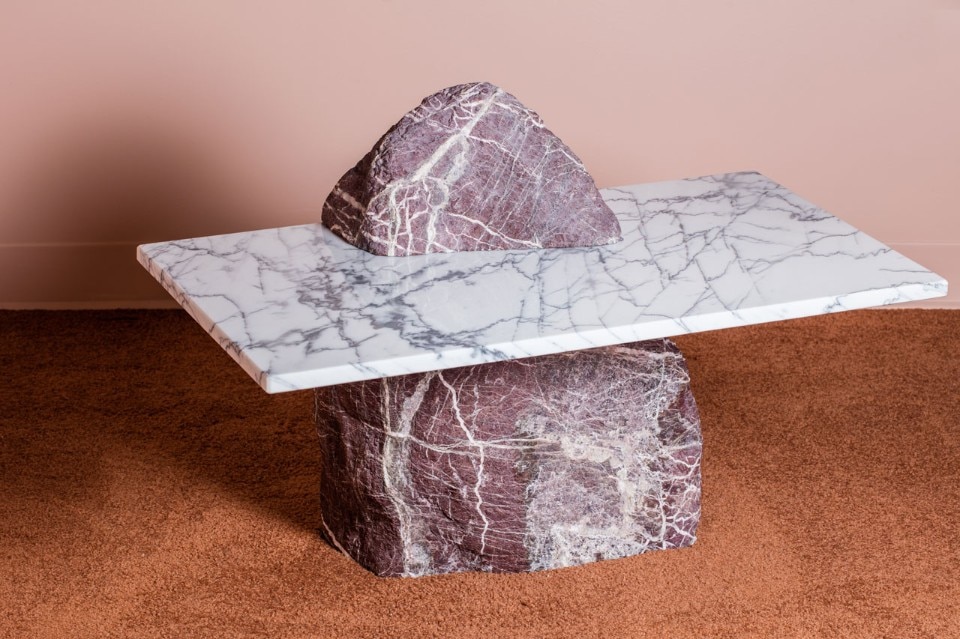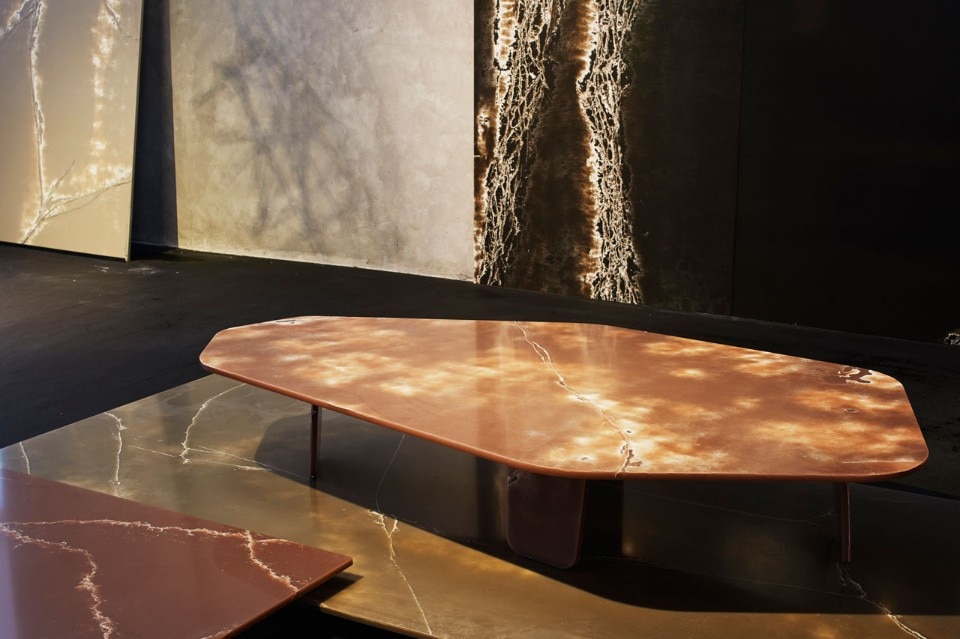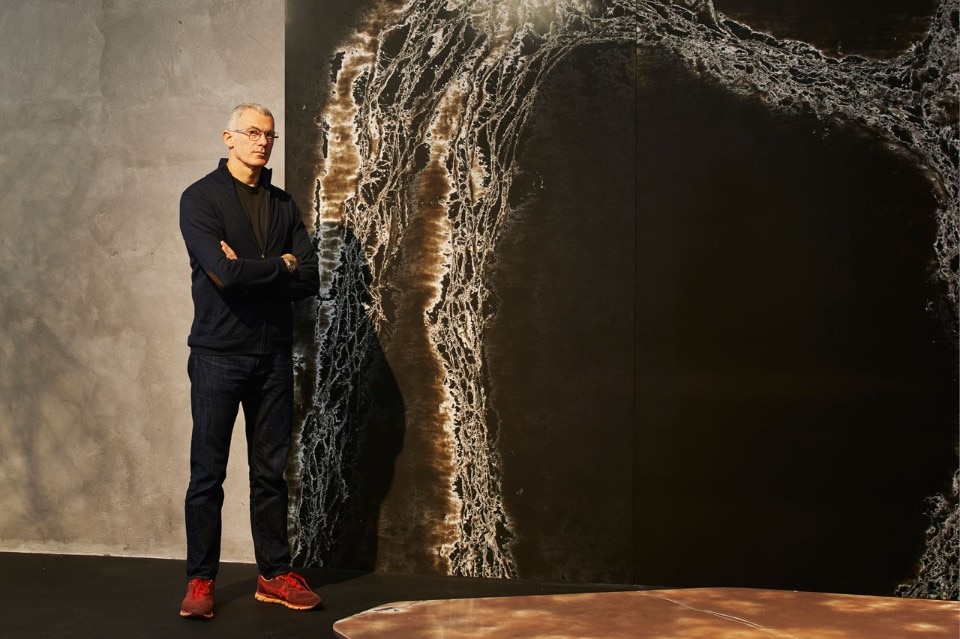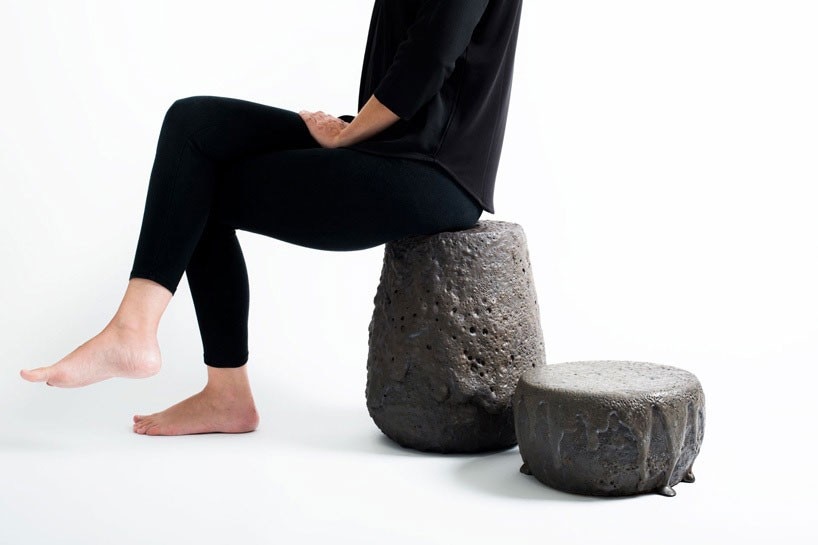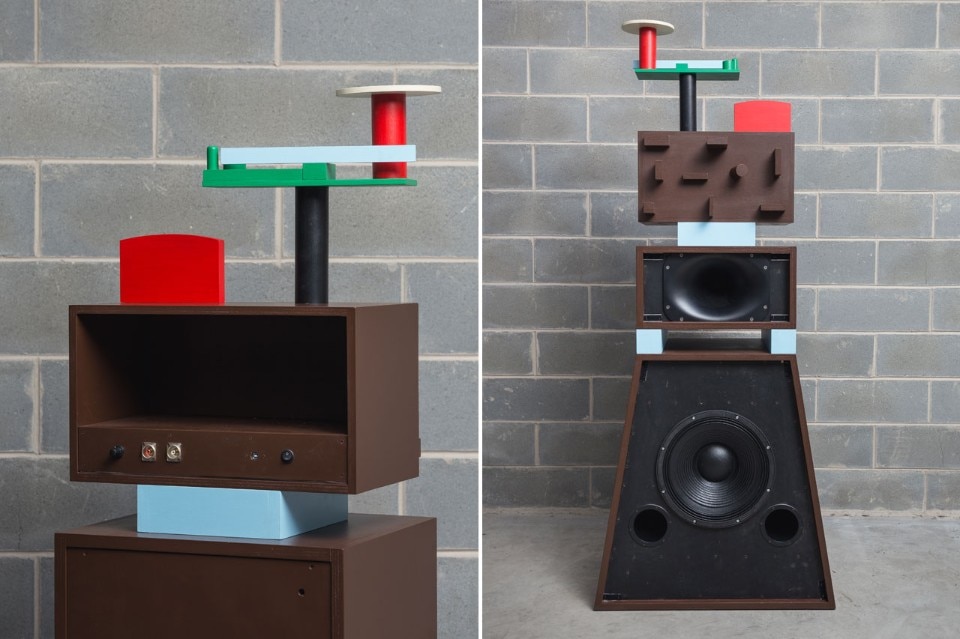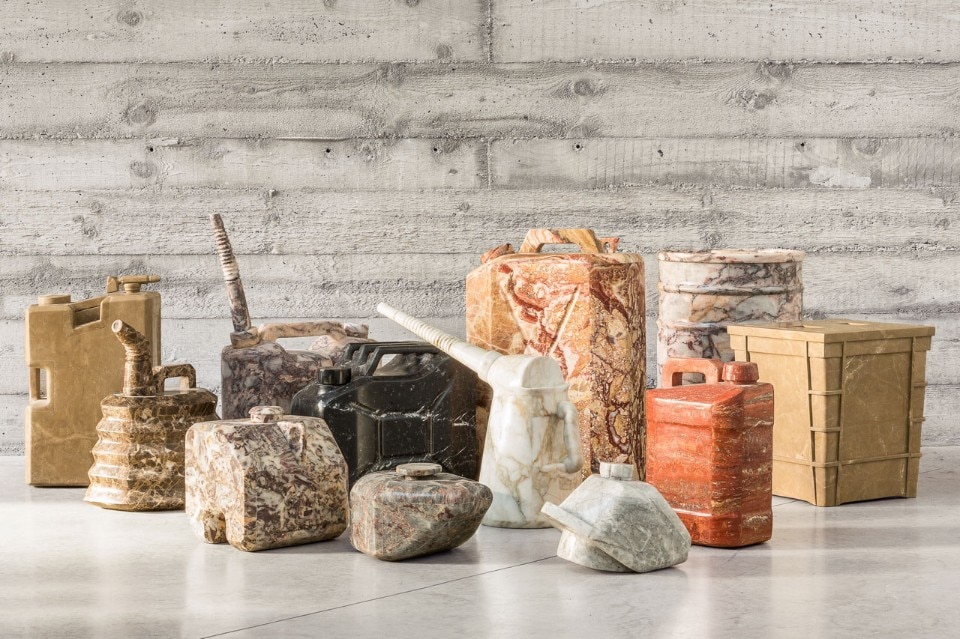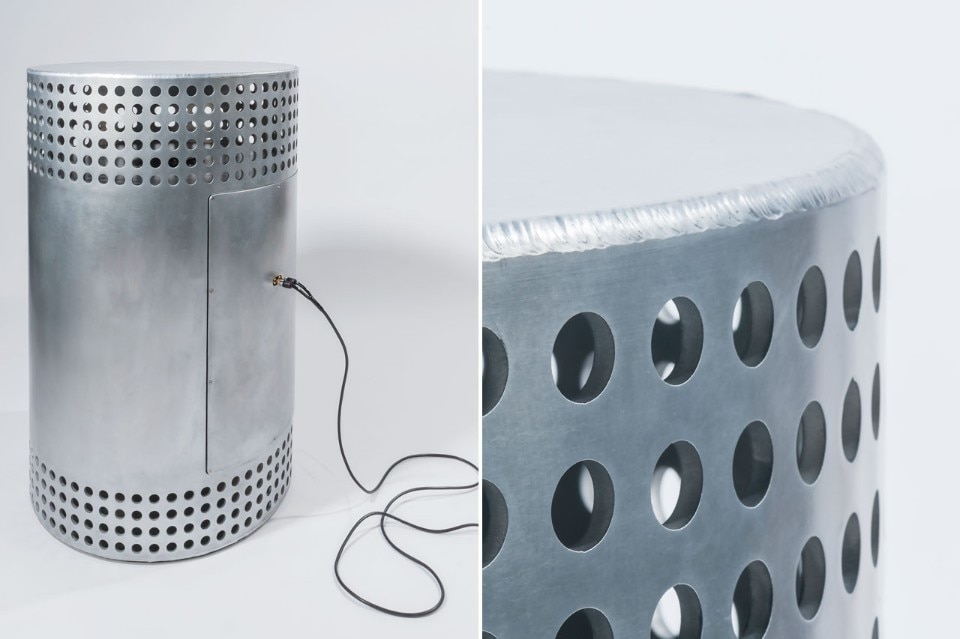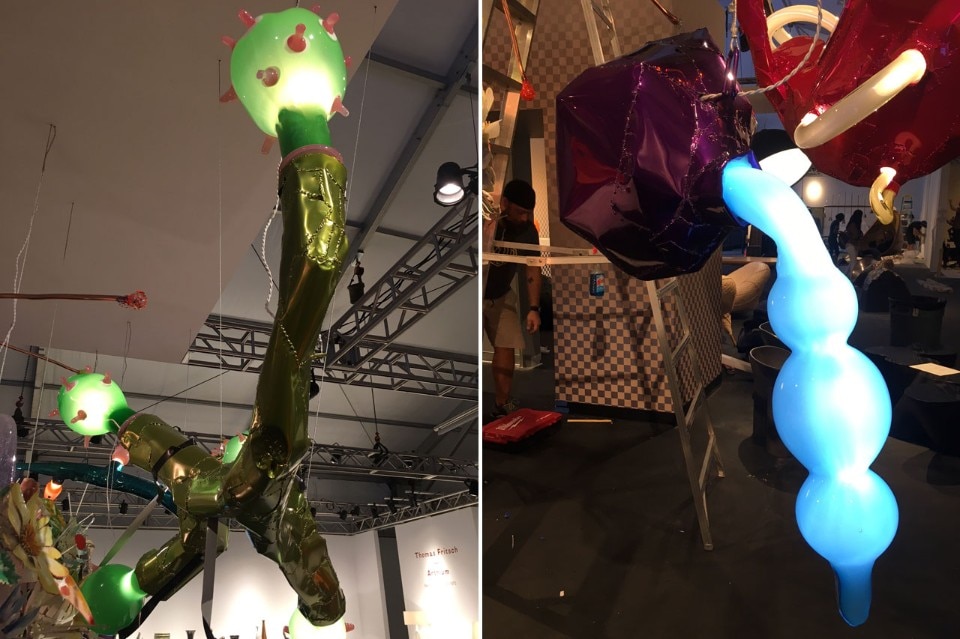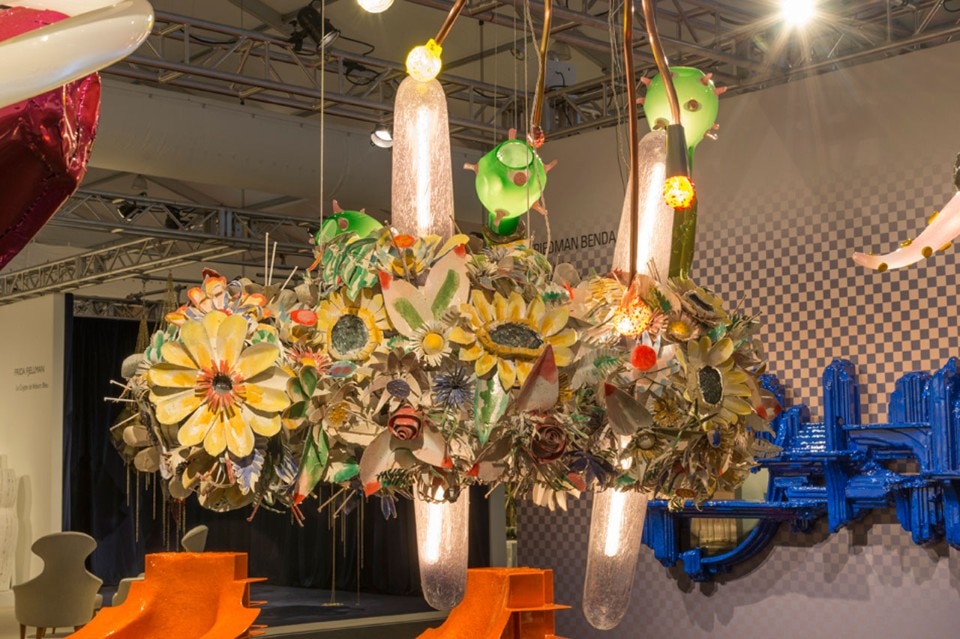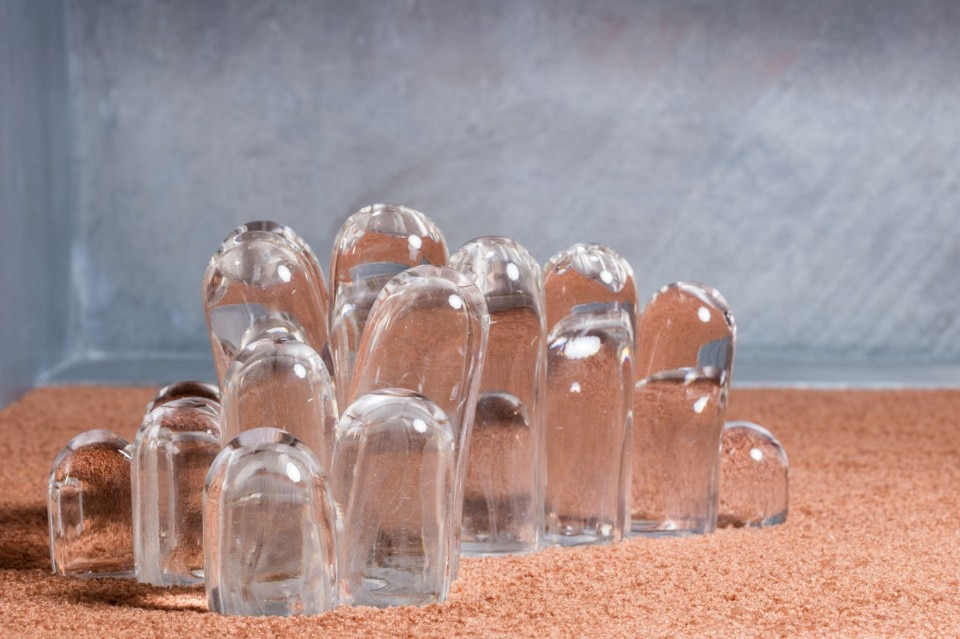
This year, the trend at the trade show was toward extreme, bold furniture with a strong visual impact. It was reflected in a number of unmissable objects on display at the stands of international galleries. But sometimes, a single colour was enough to offer a surprise: Michael Anastassiades did precisely that for the New York company The Future Perfect. His Bespoke Loop is a collection of orbital, minimalist lamps, hoop-shaped and made of brass. Usually working with a colourless palette, the Cyprus-born London-based designer Anastassiades used colour for the first time here, a light-green verdigris. His poetic floor-, wall- and suspension lamps show a unique approach to elementary geometric shapes, elevating a simple lamp to a luminous sculpture. At the same stand, there was a screen by the Milan-based Dimore Studio, also with a finely lacquered geometric motif. The stand of Gabrielle Ammann, a German gallery from Cologne, showed a vintage gem: a 1973 tapestry of rare beauty by the maestro Andrea Branzi called Coppia Metropolitana.
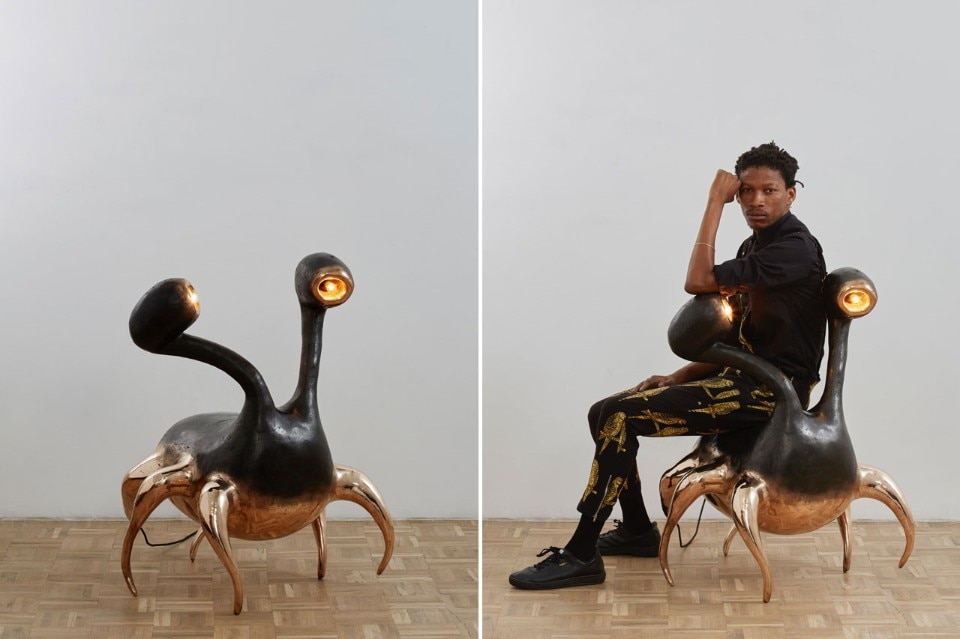
From South Africa, the husband-and-wife design dealers Trevyn and Julian McGowan promote African designer-artists. They represent the artist Atang Tshikare, who creates quirky bronze creature-sculptures. As the son of a famous South African graphic designer, he inherited a special feel for texture, which he combines with an amazing skill in working with materials. His extravagant zoomorphic sculptures – a giant crab and a giraffe you can sit on – are always combined with a light, in accordance with the principle that it is only good and right to add functionality to beauty.

